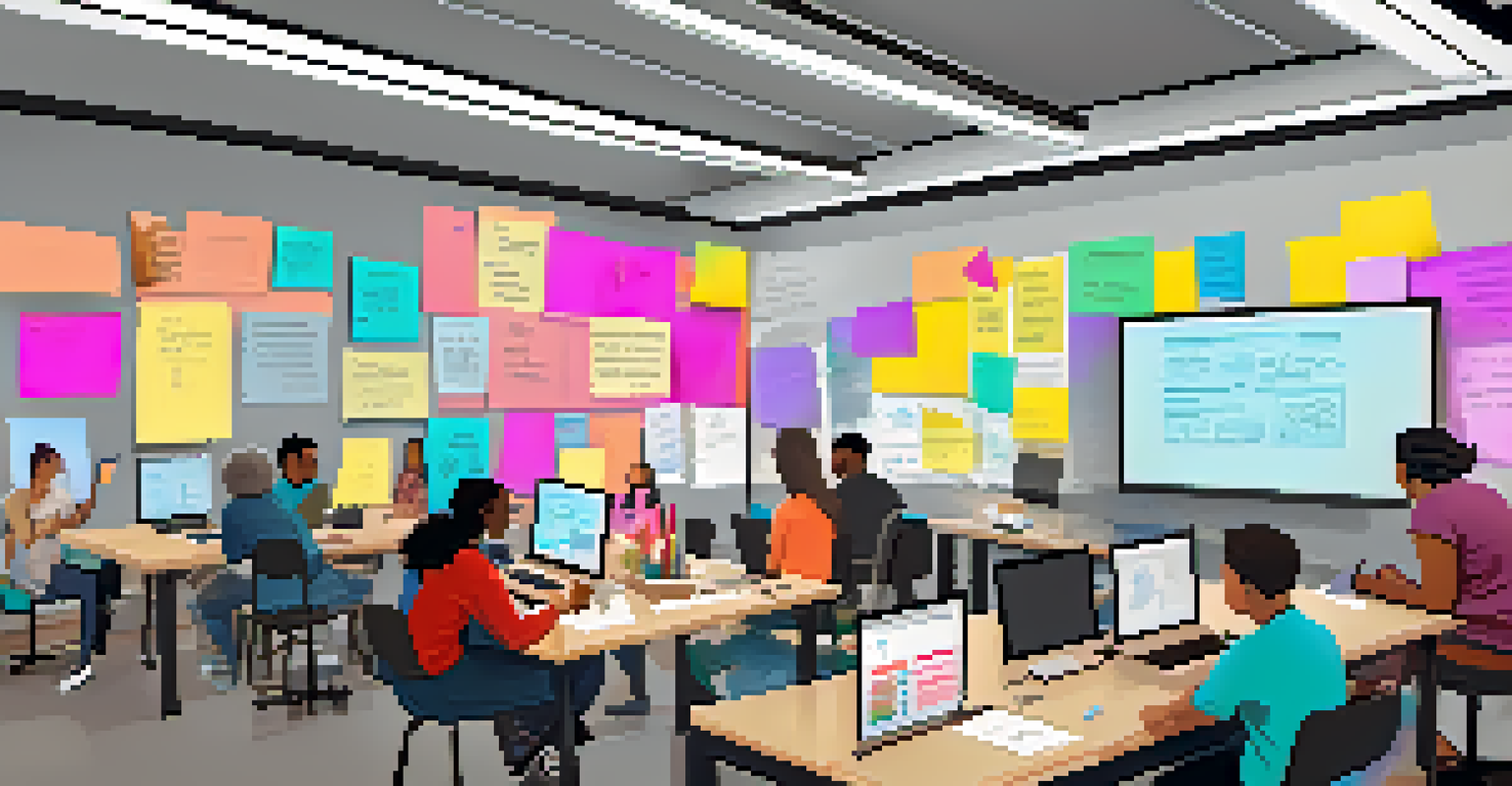Accessibility in HCI: Designing for All Users Effectively

Understanding Accessibility in Human-Computer Interaction
Accessibility in human-computer interaction (HCI) refers to designing systems that everyone can use, regardless of their abilities. This includes people with disabilities, elderly users, and those with varying levels of tech-savviness. By prioritizing accessibility, designers can create more inclusive experiences that cater to a diverse audience, allowing everyone to interact with technology effectively.
Accessibility is not a feature, it's a social trend.
To achieve this, it's crucial to understand the different types of users and their unique needs. For example, consider how visually impaired individuals rely on screen readers to navigate digital content. By implementing design principles that accommodate such technologies, HCI professionals can ensure that their products are usable for all.
Ultimately, accessibility isn't just a box to check; it enriches the overall user experience by promoting usability. When everyone can access and benefit from technology, it not only enhances individual satisfaction but also broadens the reach of products and services.
Key Principles of Accessible Design
There are several key principles that guide accessible design, including flexibility, simplicity, and perceptibility. Flexibility means accommodating a wide range of individual preferences and abilities, while simplicity ensures that the user interface is easy to understand and navigate. Perceptibility involves making information easily perceivable to all users, regardless of their sensory capabilities.

For instance, using high-contrast colors can help users with visual impairments differentiate between elements on a screen. Similarly, providing alternative text for images ensures that visually impaired users can understand the content through screen readers. By applying these principles, designers create a more intuitive experience for everyone.
Design for All Abilities
Creating accessible HCI ensures that technology is usable by everyone, including those with disabilities and varying tech skills.
Incorporating accessibility from the beginning of the design process can save time and resources in the long run. Rather than retrofitting accessibility features later, thinking inclusively from the start can lead to a more seamless and effective design that benefits all users.
Conducting User Research with Diverse Groups
User research plays a pivotal role in creating accessible designs. Engaging with diverse user groups, including those with disabilities, can provide invaluable insights into their specific needs and challenges. This approach ensures that designers understand real-world experiences, leading to more effective solutions.
Designing for accessibility means designing for everyone.
For example, conducting interviews or usability tests with individuals who have different abilities can highlight potential barriers in a product. These findings can then inform design decisions, making it easier for all users to engage with the technology. This user-centered approach fosters empathy and leads to better outcomes.
Moreover, involving a variety of perspectives during the research phase helps to uncover assumptions that designers may hold about their users. By challenging these assumptions and prioritizing inclusivity, teams can create products that genuinely meet the needs of a wider audience.
Testing for Accessibility: Best Practices
Testing for accessibility is essential to ensure that products function well for all users. Best practices for testing include using both automated tools and manual testing methods. Automated tools can quickly identify common issues, while manual testing allows for a deeper understanding of user interactions.
For instance, screen reader testing can reveal how well a product communicates with assistive technologies. This process often uncovers unexpected barriers that may not be visible to designers or developers. By combining these testing methods, teams can identify and address accessibility challenges effectively.
User Research is Crucial
Engaging diverse user groups during the design process provides valuable insights that lead to more effective and inclusive solutions.
Additionally, involving real users in the testing process is crucial. By getting feedback from individuals with disabilities, designers can gain insights into their experiences and make necessary adjustments. This collaborative approach not only enhances accessibility but also fosters a sense of community and trust among users.
The Role of Standards and Guidelines in Accessibility
Standards and guidelines play a vital role in promoting accessibility in HCI. Established frameworks, such as the Web Content Accessibility Guidelines (WCAG), provide clear criteria for creating accessible digital content. These guidelines serve as a roadmap for designers, helping them understand what constitutes an accessible experience.
By adhering to these standards, organizations can demonstrate their commitment to inclusivity and ensure compliance with legal requirements. This is especially important as laws regarding digital accessibility continue to evolve globally. Following established guidelines can help mitigate risks and avoid legal challenges.
Moreover, using these standards can improve overall user experience, leading to higher user satisfaction and engagement. When accessibility is built into the design from the outset, it benefits all users, not just those with disabilities, ultimately creating a more enjoyable and efficient interaction.
Accessibility Tools and Resources for Designers
There are numerous tools and resources available to assist designers in creating accessible products. From color contrast checkers to screen reader simulations, these resources can help identify potential barriers early in the design process. Familiarizing oneself with these tools can streamline the design workflow and enhance overall accessibility.
For example, tools like WAVE and Axe can evaluate web content for accessibility issues, providing actionable feedback. Similarly, resources like the A11Y Project offer guidelines and best practices that can be easily integrated into design processes. By leveraging these tools, designers can make informed decisions that prioritize accessibility.
Accessibility Boosts Business Success
Prioritizing accessibility not only enhances user experience but also expands market reach and improves brand reputation.
It's also important for designers to stay updated on the latest trends and developments in accessibility. Attending workshops, webinars, and conferences can provide valuable insights and foster connections with other professionals in the field. Continuous learning ensures that designers are equipped to create inclusive experiences that evolve alongside technology.
The Benefits of Inclusive Design for Businesses
Emphasizing accessibility in design not only benefits users but also provides significant advantages for businesses. An inclusive approach can expand market reach by attracting a broader audience, including individuals with disabilities. This not only enhances the brand's reputation but also increases customer loyalty.
Moreover, accessible design can improve overall user experience for everyone, leading to higher satisfaction rates. When a product is easy to use and navigate, it encourages positive interactions and repeat usage. This can ultimately translate into increased sales and higher conversion rates.

Additionally, prioritizing accessibility can help companies meet legal obligations and avoid potential lawsuits. As awareness around digital accessibility grows, businesses that invest in inclusive design will be better positioned to thrive in a competitive market. This proactive approach can yield long-term benefits that extend beyond compliance.